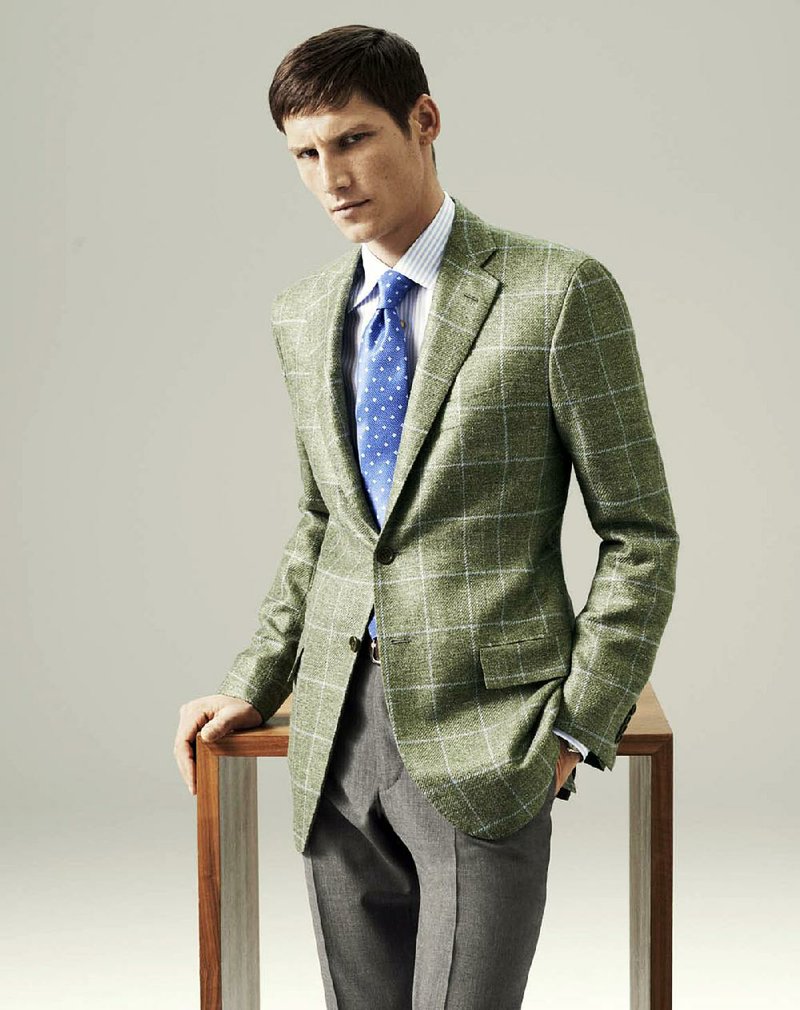Q. I'm a college senior, thinking about my job search, and realizing I'm going to need some appropriate clothes. All I have beyond polos and good pants is one dress outfit -- a blue jacket, gray pants and a few shirts and ties. I imagine I can come up with (beg for) about $1,200 to make the needed purchases before I have a paying job (beyond the campus minimum wage). Can you suggest something or some plan beyond the looks in GQ, which cost more than that for one piece of clothing?
A. I am glad you have the good sense to know that there are answers beyond the fashion magazine ads; they are aimed at the top 1 percent of "the 1 percent" of the population. They do not represent the rest of the world. Besides, I have found that some ads feature expensive items that are in such questionable taste that no well-dressed man would wear them.
Lesson No. 1: Just because an item is expensive (even wildly expensive) does not make it in good taste.
There definitely are strategies for dressing well on a logical, limited budget. But be prepared to spend extra time, and it certainly helps to have good taste. When money is not an object, a man can just walk into the finest store in town, find a knowledgeable salesperson and choose whatever he wants. Without such deep pockets, not only will he need to invest more time (in learning about which items work well and where to find them), but he also must choose carefully.
Lesson No. 2: Dark clothes, winter clothes and classic styles are the three categories where you should invest more.
To get more for your money, you need to shop strategically at one or more of the following:
• January sales in better stores
The retailers' calendar is different from reality, so the stores begin to receive their merchandise very early, such as late August for fall/winter clothing. The selection is fullest at that time, and so are the prices. By January, the store owner knows he is going to be left with unsold merchandise; he'd rather mark it down heavily to move it out of the store (before next August) and do what he can for his cash flow. So, you will find significant savings now, from 20 percent to 75 percent off. Selection of colors and styles may be limited and there is a too-sparse representation in the most popular size range, 40 to 42, but if you still have a college build, that may not be an issue. Do remember, what one first-class store doesn't have, another may. And shopping in better stores includes an important perk: knowledgeable advice. Getting a very discounted suit for $300 to $400 or six plus shirts for $150 to $300 and perhaps an accessory (good shoes for $100 or good belts at $25 each) would be good choices.
• Discount stores, catalogs, online shopping
All these offer great prices, but little in the way of helpful input. You're pretty much on your own. Still, it's a misconception to believe there must be something wrong with an item that is sold for half price. When people say, "You only get what you pay for," I say, "That's not always true." If you have reliable taste and spend some extra time selecting wisely, your savings could well justify the effort. This may be where you can find two or even three suits (or two suits and two sport jackets) for less than $700, and/or high-end shoes for $70 to $80 a pair. You also can add shirts and a couple of ties here.
• Tag sales, garage sales, gently used thrift shops
Keep in mind that a) everything is "used" after its first wearing, and b) only suits, shirts and shoes need to be your exact size. You could get lucky and find your size among the many "great deals" on their racks. You'll also find accessories that are not sized (such as ties, scarves, cuff links) and other items that are marked small, medium, large and X-large (such as sweaters and outer jackets). These make finding bargains easier. I've discovered a Burberry raincoat for $30, Paul Stuart blazers for $15, Brooks Brothers' shirts for $3, Gap sweaters for $5, and Hermes and Salvatore Ferragamo ties for $1. Of course, you do need to have "an eye," be able to recognize top-quality brand names on the labels and be willing to spend time digging. Even so, hunting (and finding) treasures can be fun. Basically, spend money here on any need you have that they have in good condition, that is close to your size (tailoring is an option) and that's not way out of style (wide lapels or wide ties).
• In your own (or others') closet
Often, something you already own is the perfect item to mix, or layer, with some new garment. Our preferences don't change much; styles and colors you've liked in the past are likely to work well with many of the new items you find. This can be a short- or long-term solution when you have emptied your coffers on the above items or have just enough to tailor clothing to your size or to alter ties to current widths.
Just as I always recommend having necessary alterations made when you shop at retail prices, the same is even truer when shopping for bargains. If you find a beautiful Gucci tie for $5 that would sell for $200 in a fine men's shop, but its only problem is that it is too wide for this year's style, it pays to have Tiecrafters make it narrower for $26. The total cost of $31 is still a good investment.
Happy hunting.
Send men's fashion queries to Male Call:
High Profile on 01/08/2017

